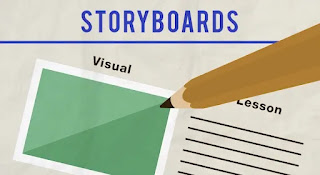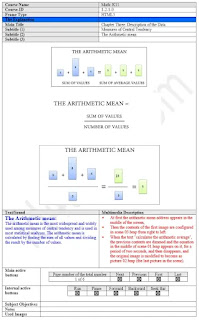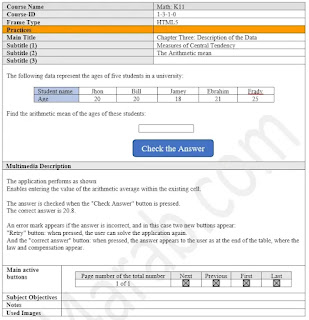Storyboarding is one of the instructional design principles, and it is an essential skill that an instructional designer must possess.
The storyboarding phase comes within the design phase in the design phase, which comes after the content analysis phase in the ADDIE model.

The storyboard instructional design inputs are the educational design document and content analysis, and its outputs are the scenario document that is distributed to the work team to start the implementation stage, within the educational design stages of the educational curricula or digital educational content.
Storyboard instructional design from an applied point of view
This post presents elearning storyboard examples, through which we quickly walk through what the storyboard should include, with practical tips for preparing each of its key elements.
This topic addresses the following points:
1- What should the storyboard include?
2- Describe the objectives
3- Description of the explanation
4- Description of practical applications
5- Description of the self-evaluation
6- Other elements that may be included in the storyboard
7- General tips
8- Download the storyboard template
What should the storyboard include?
- Objectives
- The explanation
- Practical applications and activities
- Self-evaluation
Describe the objectives
The objectives of the lesson or learning object related to the storyboard are illustrated by the analysis document.
dear studentAfter finishing this lesson, you will be able to:1.2.3.4.
After completing this unit, the learner will become familiar with ...
Description of the explanation
- Be precise and simple, use easy phrases to describe how the educational content is implemented.
- Use your graphic skills to illustrate your idea of what you want to appear on the screen in the scene field.
- Explain your idea to the graphic designers. Don't just send them the script and go away, always follow them until they become familiar with your work and get used to your style.
- Do not use flat ideas that are difficult to implement.
- Knowing the limitations and capabilities of applications software used by graphic designers, developers, and educational programmers, helps you describe the limits of the capabilities of these applications and also helps to conserve working time.
Description of practical applications
- Emabpde an interactive application as much as possible for each educational concept, to motivate and activate the learners, and make them positive in interacting with the digital educational content.
- The interactivity can include: choose, drop-down menus, enter words, drag, and drop, or hotspot activities.
- Make the interactive application different from traditional questions that are commonly spread from Multiplex MCQ.
- Connect your idea to interactive activity in the scene.
- List all the reactions and feedback that can occur when he interacts with the activity.
- Select positive motivation for the correct answer, negative motivation for the wrong answer, and as far away as possible from traditional motivation.
Description of the self-evaluation
- Formulate the assessment questions in simple language suitable for learners.
- Within the question description a reinforcement for the correct answer, and a different reinforcement for the wrong answer.
- Use different motivation in questions feedback, do not use the same motivation for all questions.
Other elements that may be included in the storyboard
The storyboarding scenario can include elements other than the previous ones (objectives, explanation, practical applications, evaluation).
For example, it is possible to add a screen dedicated to the lesson summary and come before the self-evaluation.
It is possible to add a screen for the enrichment information, and it is arranged before the self-evaluation.
You can add a special screen for terms if the course requires it.
General Tips
- Spell check the storyboard before submitting it to graphic designers and programmers to ensure that it is free of spelling errors, especially for texts that will appear on the screen.
- Dedicate a portion of your time to monitoring graphic designers and programmers to make sure they are working properly.
- Do not be ashamed of making mistakes, modify the script and send a modified version to the designers, and pass them on to inform them of the modifications that have occurred in the new script version.
- Contact an SME expert to explain the difficult or incomprehensible parts of the material to you.
- If an SME expert is not available, find an SME expert on staff to explain it to you.
- Always encourage the accuracy of the scientific material in the educational curriculum, and check the correctness of the questions and activities. On the Internet and YouTube, you will always find many examples and aids.
- Simplify your ideas, and communicate them in easy and simple language.
- See all that is new and always be up-to-date with technologies in the field of e-learning and educational technologies, learn about the latest developments in curriculum preparation applications and electronic content and try them for yourself.
- You should be aware of the limitations of technologies and software for content authoring and digital educational content creation.
- The script was documented with codes and versions well known to the work team.






